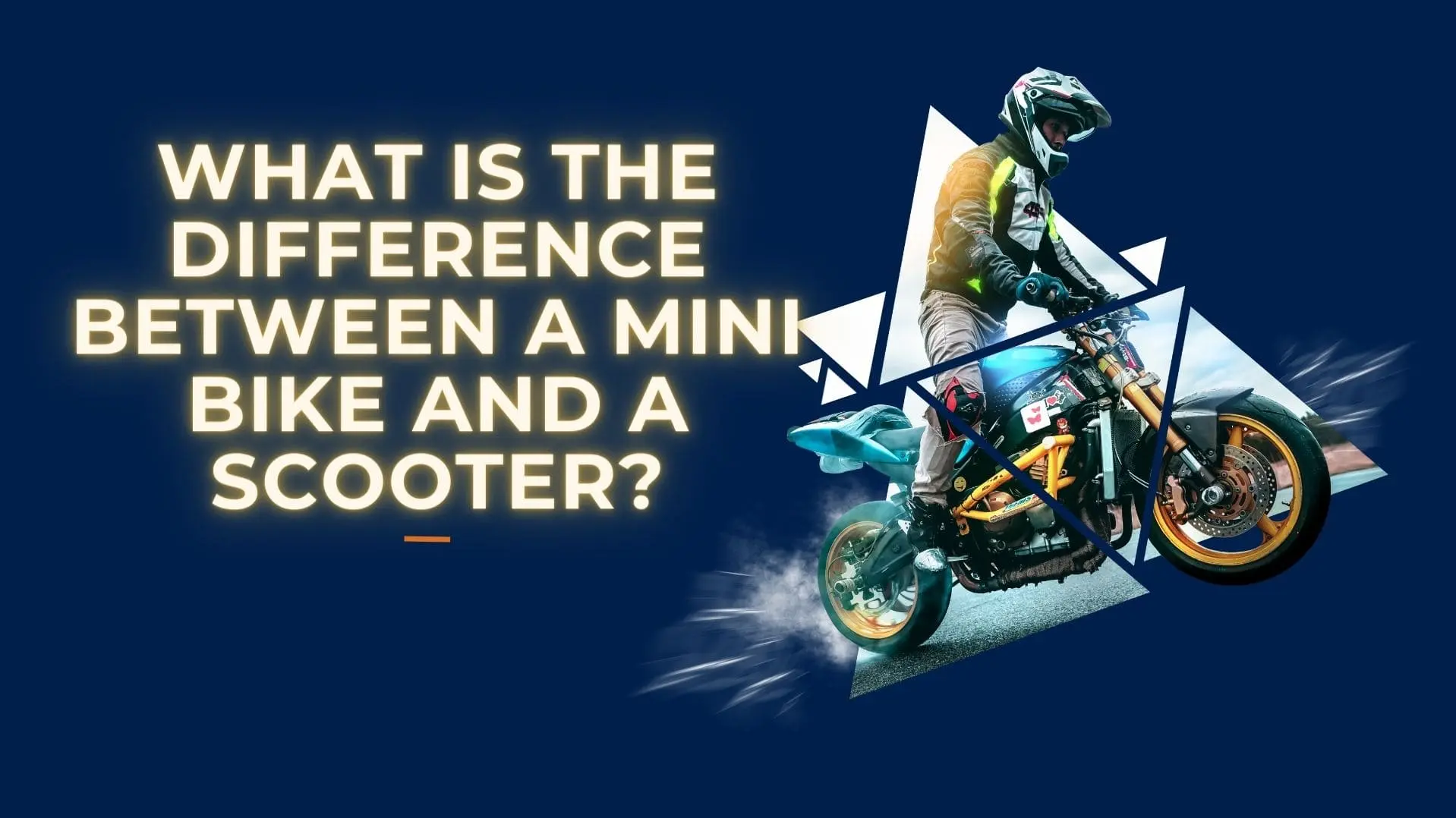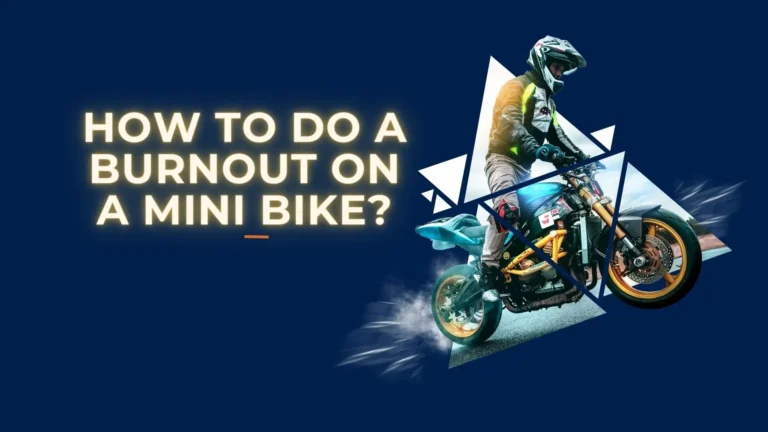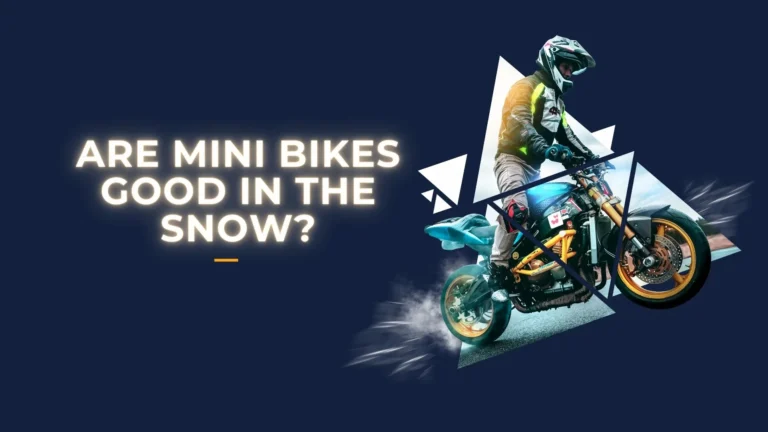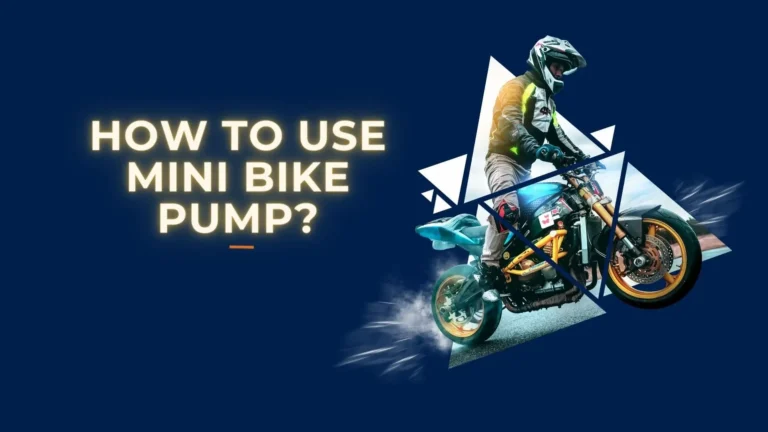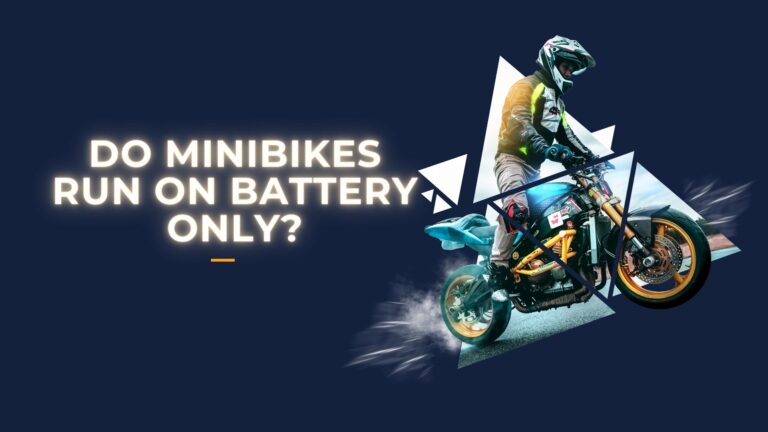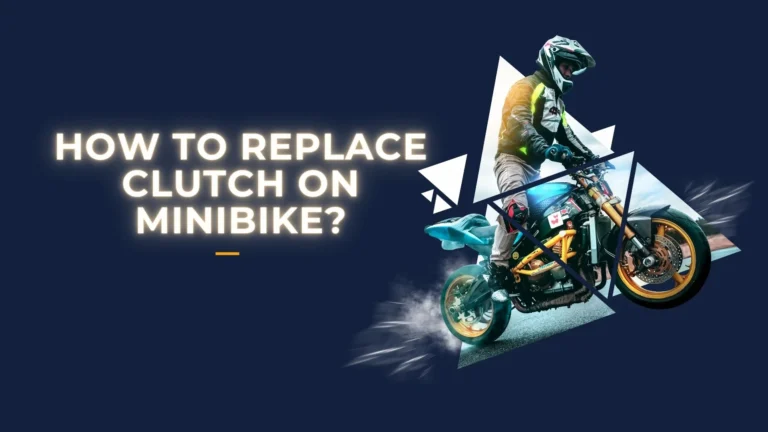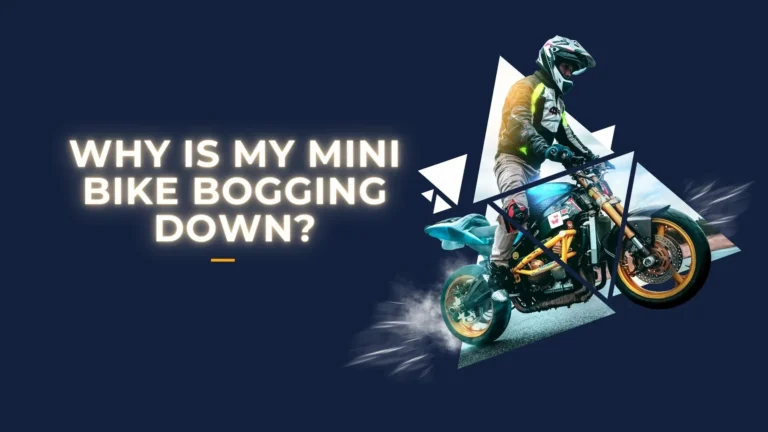What Is the Difference Between a Mini Bike and a Scooter?
Mini bikes have small engines and manual transmissions for off-road fun. Scooters mainly enable easy street transport through automatic gears and road-ready parts.
Rollin’ up at the big race in my mini bike, I met Scooter Pete on his scooter. My bike seemed small next to his bigger scooter. But when the race started, I left fast! Pete zipped by later on the flat road. His big wheels stayed straight. I passed back in bumpy dirt by being light.
Mini bikes and scooters seem the same but have key differences. The way they ride and handle varies. Their engines, parts, sizes also differ. Matching these to what you need and want matters most.
Let’s explore some major ways mini bikes and scooters contrast. That allows picking the right one to meet your needs for fun or to commute. See what sets them apart before you choose your new wheels!
| Characteristic | Mini Bike | Scooter |
|---|---|---|
| Engine Size | 30cc to 212cc | 50cc to 250cc |
| Frame Size | Compact, motorcycle-style | Step-through, larger |
| Wheels & Tires | 8-10” knobby tires | 10-16” road tires |
| Transmission | Manual | Often automatic |
| Top Speed | 40+ mph | Around 30 mph |
| Handling | Nimble, good for trails | More stable on pavement |
| Customization | Lots of off-road options | More appearance options |
| Street Legality | Usually not street legal unmodified | Often sold street-legal |
| Best Use Case | Off-road recreation | Urban transportation |
Key Takeaways
- Mini bikes have smaller engines optimized for off-road use, while scooters have road-oriented engines
- Mini bikes use manual transmissions and handle better on dirt, whereas scooters often have automatic ease of use
- Plentiful customizations make mini bikes good project vehicles, while scooter mods focus on aesthetics
- Scooters usually meet registration requirements for street use, while mini bikes don’t from the factory
- Match intended riding terrain and needs to choose between recreational mini bikes versus transport scooters
What Are Mini Bikes and Scooters?
Mini bikes are small motorbikes for recreation or racing. Key features:
- Small wheels and compact frame
- Manual transmission (gear shift)
- 30cc to 212cc engines
- Rugged build
- One rider on open seat
Scooters are easy to ride motorbikes with step-through frame. Key features:
- Automatic transmission
- Larger wheels than mini bikes
- Open floorboards to rest feet
- 50cc to 250cc engines typically
- Urban build
- One rider on open seat
In short, mini bikes resemble lightweight dirt bikes while scooters resemble Vespa-style city bikes. But they share affordable, efficient transportation.

Size and Build Distinctions
When it comes to size and how mini bikes and scooters are built, there are some clear differences:
- Dimensions – Mini bikes generally have a very small and compact overall frame size, with much shorter wheelbases than scooters. Their small wheels also contribute to a tiny overall package. Scooters are larger bikes with longer wheelbases for adding footrests and floorboards.
- Frames – The welded steel tube frames used on mini bikes resemble scaled-down dirt bike frames allowing greater ground clearance. Scooters utilize open-floor steel frames that enable step-through riding and often support storage and windshield accessories.
- Wheels & Tires – 8 to 10-inch skinny treaded tires are the norm on mini bikes while larger 10 to 16-inch wheels with road tires provide better traction and stability on scooters.
- Seating – Mini bikes have a motorcycle-style open seat and handlebar while scooter riders sit lower on a floorboard with upright bars to hold on to.
The size distinction means mini bikes function best for single rider use as light “dirt bike-style” recreational machines. Meanwhile, roomier scooter construction suits stop-and-go traffic and supports more accessories.
Engine and Drivetrain Variances
Mini bikes and scooters need engines and ways to transfer power to the wheels. But they use different types.
- Engine Sizes – Mini bikes have small yet mighty 30cc to 212cc gas engines. Scooters mostly have bigger 50cc to 250cc engines that run on gas or electric power.
- Transmissions – Mini bikes utilize hand-shifted manual transmissions with gears to change ratios. Many scooters have twist-and-go automatic CVT transmissions requiring no shifting.
- Fuel Sources – The gas engines used on mini bikes and some scooters require filling up with regular gasoline. But popular electric scooter models just need their batteries recharged.
So mini bike engines focus on light weight and max power while scooter power plants promote ease of use. And not needing to shift gives some scooters set-it-and-forget it operation. When it comes to making them go, what combination of engine size, transmission type, and fuel fits your needs?
Riding Capabilities and Handling
Mini bikes and scooters differ quite a bit in how they perform and handle on streets or trails:
- Speed – Mini bikes are geared for faster top speeds, reaching up to 40+ mph fairly easily. Scooters generally max out at around 30 mph, sacrificing top-end for better acceleration.
- Power – The torquey mini bike engines enable quick driving off-road and across obstacles that would limit most scooters. But scooters motor strongly on paved surfaces.
- Maneuverability – With motorcycle-style steering and broad dirt bike tires, mini bikes nimbly turn tight corners. But larger tires help scooters track straighter at speed with more stability.
- Traction & Control – Knobby mini bike tires dig through loose dirt and muddy conditions that would leave road-oriented scooter tires spinning. But scooters handle wet roads much more predictably.
- Riding Ease – Beyond shifting gears, controlling mini bikes takes more rider input and skill. Scooters are simpler for new riders, with automatic operation and step-through frames.
In the end, mini bikes make playful trail and dirt machines while easy riding scooters better suit paved commuting needs. Matching abilities to where and how you want to ride makes choosing between them clearer.
Maintenance and Repair Considerations
What’s easier to work on and customize – mini bikes or scooters? Some key points:
- DIY Maintenance – With their exposed engines, mini bikes make changing oil, plugs, and filters a snap. Scooters hide parts under plastics, making access trickier.
- Repair Complexity – Finding problems means digging into lots of wires and gauges on scooters. It’s quicker to spot mini bike issues since they’re basic machines.
- Parts Availability – New and used mini bike parts can mean scavenging junkers and getting creative. Huge supply chains mean scooter components are readily available.
- Customization – A thriving aftermarket scene lets mini bike owners customize engines, tires, bodies and more. Not as many modification options exist currently for decking out scooters.
Like working on your ride? Mini bikes make ideal projects. Just need basic parts swaps? Scooters are likely the simpler route. Factor your repair style and interests into choosing between them.

Costs and Expenses
Want to customize your ride uniquely? Mini bikes and scooters offer different options:
- Mini Bike Upgrades – Owners often bolt-on expanded forks, performance exhausts, and drilled carbs to increase horsepower. Big knobby tires and trimmed frames improve handling. Lots make them faster off-road.
- Scooter Customization – Riders mostly customize looks through paint jobs, decals, chrome, and trick parts without boosting speed much. Making them prettier is more common.
- Function vs Looks – The mini bike scene strongly centers on mechanical mods to increase power and function. Scooter personalization remains focused largely on visual styling and appearance versus hardcore performance gains.
If you want to push performance, no question mini bikes give more parts options currently. But to artistically style your ride, scooters allow ample creative outlets. Pick your custom flavor!
Street Legality Aspects
Want to ride on public roads? Mini bikes and scooters have different legal requirements:
- Registration – Scooters commonly include paperwork, plates, or tags allowing street registration depending on local laws. Mini bikes generally don’t meet safety specs for legal street registration straight from the factory without modifications.
- Safety Equipment – Operating scooters legally on roads demands adding proper lights, signals, horns, mirrors, speedometers and other mandated gear. Stripped down mini bikes need substantial upgrades too.
- Licensing – With larger engines and higher speeds, most areas require a valid driver’s license to legally drive scooters on streets. But mini bikes meant for closed courses may not need licensing in certain locations.
While converting them is possible, mini bikes don’t usually meet on-road requirements out of the box. Scooters have equipment and licensing needs but are sold street-ready. Confirm your local laws first if planning to drive either on public roads!
Common Uses and Intended Operating Environments
Mini bikes and scooters differ in where they work best:
- Recreation – With knobby tires and durable construction, mini bikes thrive being raced or trailed in off-road environments like dirt tracks, trails, hills, and motocross courses. Less suited for street use.
- Commuting – Scooters feature road-ready setups ideal for paved urban and suburban transport like driving to work, stores, campus, or neighborhood cruising. Less optimal off-road.
- On-Road – Nimble scooter handling and braking helps navigating congested streets and highways. Mini bikes fall short meeting legal requirements for public road operation in most regions.
- Off-Road – Mini bike light weight traction helps blast through muddy conditions, loose dirt, small jumps and tricky technical sections that would overwhelm most scooters.
In the end, recreational mini bikes are built to get dirty while road-centric scooters transport riders cleanly. Match intended riding environments to select the best fit.
Choosing Your Match
Mini bikes and scooters differ across areas like:
- Size (frames, wheels)
- Performance (speed, power)
- Use cases (recreation vs transport)
- Customization (upgrades available)
- Legality (registration needs)
Scooters balance ease of use with road readiness by:
- Prioritizing automatic operation
- Optimizing street transportation duties
- Limiting off-road ruggedness somewhat
Mini bikes deliver lightweight customization and dirt capabilities via:
- Manual shifting needing skill
- Recreational-focused abilities
- Customization potential
- Off-road prowess
So consider your:
- Speed requirements
- Riding environments (paved vs dirt)
- Mechanical interests
- Street legality needs
Matching those factors to mini bike or scooter traits makes picking the right affordable, compact two-wheeler for your goals and interests much clearer!


